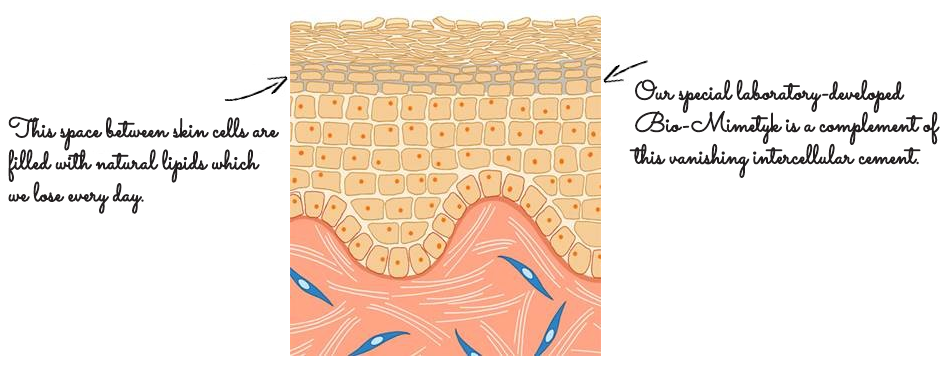 BIOMIMETISM
BIOMIMETISM
(from Gr. bios - life, mimesis - imitate)
Biomimetics (or bionics) was discovered in the mid-20th century, and is considered one of the most relevant and fastest-growing interdisciplinary fields of science.
Biomimetics explores and observes the construction and operational principles of nature - living organisms, wildlife, natural phenomena, and makes use of their solutions, behaviour and ongoing processes, transferring them into modern technical solutions.
What is the easiest way to explain the concept of biomimetics?
Surely you once had or still have Velcro-strap shoes in your closet. This simple and highly functional invention is the best and most popular example of biomimetics – one that came about during the observation and analysis of nature. In 1941 Georges de Mestral, a Swiss engineer, fascinated by the strength with which "burrs", namely burdock flowers, stick to a dog's fur, decided to attentively look at the structure of hooks and examine the possibility of using them in everyday life. After 10 years of study, "burrs" were patented and brought into production under the patented name of "velcro", resulting from the combination of the following French words: "velours" and "crochet" (velvet and hook).
Examples of biomimetics in daily life have become more common, as nature has provided scientists with new solutions and technologies. A free ventilation and cooling system based on the construction of ventilation ducts in termite mounds is used in an experimental complex of buildings in South Africa. Lotus leaves were the inspiration behind the creation of hydrophobic surfaces, on which even large water droplets run off without leaving wet traces, while collecting dirt off of them. Thanks to these observations, paints are developed with their self-cleaning surfaces and utensils which, when emptied, never get dirty.
Julian Vincent, a biomimetics expert from the University of Bath in the UK, believes that nowadays we make use of as little as 10% of all the solutions observed in nature - we are unable to "figure out how they work", or to imitate the rest of them. For example, scientists still cannot figure out how a small beetle (Melanophila acuminata) is able to "sense" a fire located 50 km away...
But they discovered how to use biomimetics in cosmetics!
And what do biomimetics have to do with cosmetology?
Let's start from the beginning...
Lipids, which are a soft, creamy link between and among epidermal cells, are one of the most important skin elements. Lipids form biological membranes and get shaped at the maturation of keratinocytes within spinous (stratum spinosum) and granular (stratum granulosum) skin layers. Together with fats, ceramides and cholesterol, they act as cement connecting stratum corneum cells. This "cement" protects the skin and the whole body from foreign substances penetrating into their interiors, forms a barrier to water the skin and provides softness and elasticity.
We produce lipids on a daily basis, but from the age of 25 their number decreases. We lose them through washing out when bathing, by poor dieting and application of improper cosmetics. A lack of lipids makes the skin lose water internally and externally - through non-tight epidermal "walls" - harmful substances, bacteria, fungi find it easier to get inside, exposing it to environmental factors.

SYNESIS and scientists from Berlin have developed a biomimetic formula, being the perfect representation of natural lipids produced by the epidermis. Bio-Mimetyk® SYNESIS has been re-created under laboratory conditions from natural and safe substances known and used in cosmetology.

Bio-Mimetyk® SYNESIS combines the highest quality materials. To produce it we use the following:
- Lecithin
- shea butter, from shea nuts
- squalane, made from olives
- yeast-based ceramide 3
Comparison of the composition of natural skin lipids and Bio-Mimetyk® by SYNESIS
|
Skin lipids include: |
Bio-Mimetyk by SYNESIS includes: |
Biomimetic cosmetics by SYNESIS stand for the latest and most natural scope of care offered by modern cosmetology.
"For three years I have sought to introduce new biomimetic formulas, as this is a new trend in cosmetics - the most natural, simply physiologically adapted to the rhythm of our skin. This is a clear and rational concept, much more natural and healthier when compared to so-called ecological, organic or natural cosmetics. Biomimetic cosmetics are compatible with the operating rhythm of healthy skin and ideally adjusted to take care of skin with problems, psoriasis, atopic dermatitis, proneness to allergies and dryness."
Anna Garbaczewska, founder of the SYNESIS brand




